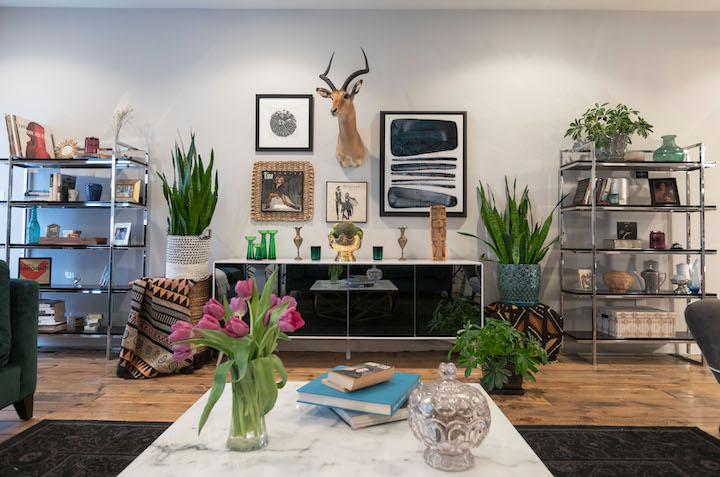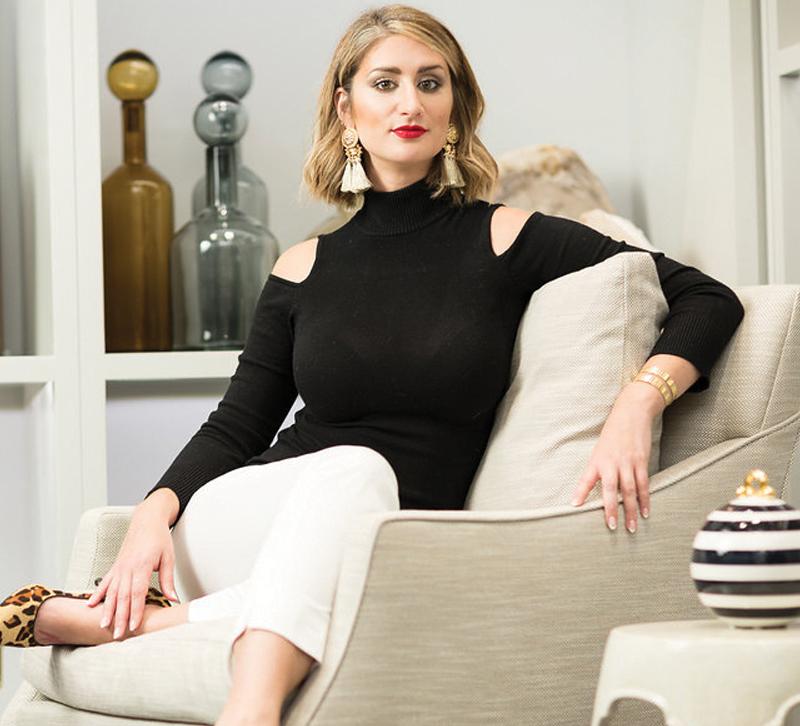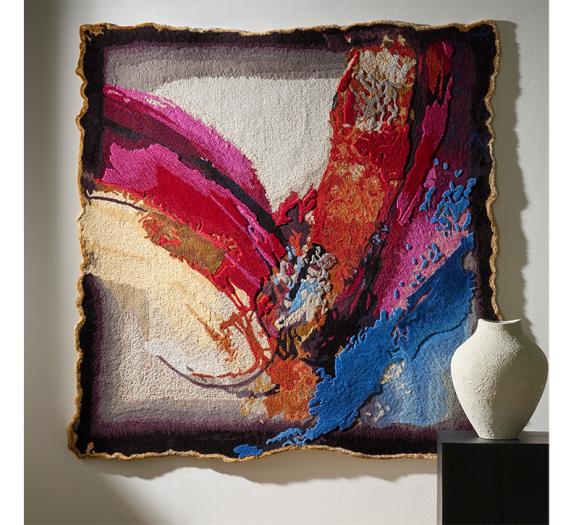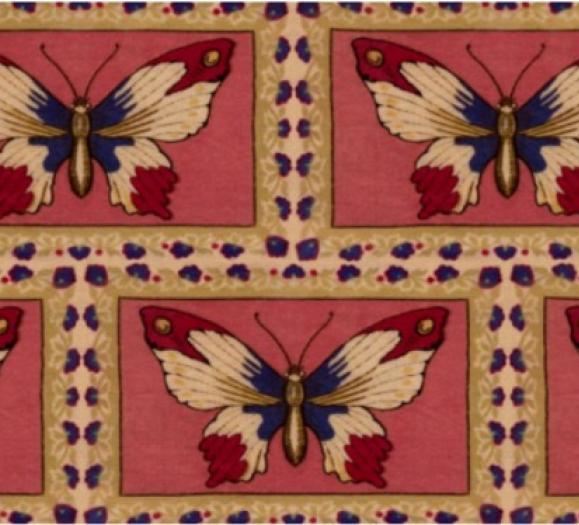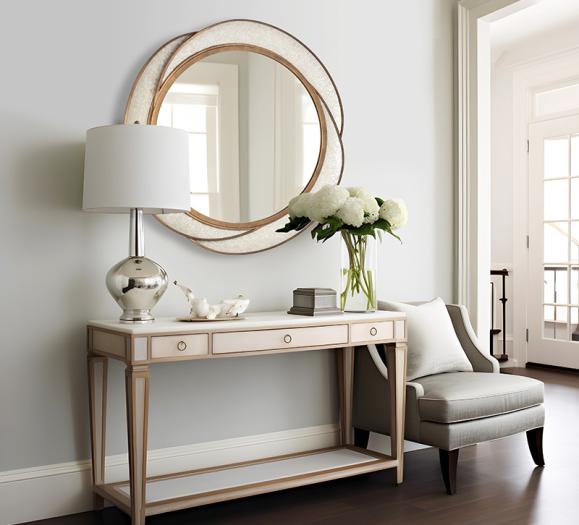They say, “Beauty is in the eye of the beholder.” That means for interior designers, meaningfully outfitting a client’s space with art that tells an accurate story while managing the budget is of the utmost importance. Whether the wall art we choose for our design clients is a landscape, portrait or abstract in style, originality is key.
As designers, how can we push the envelope when it comes to using wall art? What’s been done before, and how can we approach taking bold risks in order to create a fresh perspective on how to use art in both residential and commercial spaces?
The fundamental way to stand out from the crowd is by including elements that allow spaces to showcase their owners’ identities. What does that mean?
In order to tell an authentic story visually through using wall and sculptural art, pieces must be at minimum one of the following: original, a direct record of an event or person related to the client, or a special piece that speaks to either designer or client within the context of the job’s design aesthetic.
Whether designers use art from a local gallery or a huge retailer, or find them by discovering one-of-a-kind gems at a large antique fair like that of Round Top, TX, the key is to create spaces with stories that are truly original.
What better way to tell a story than through a carefully curated gallery wall and strong stand-alone pieces that illustrate the identity of both client and designer?
Now that we’ve laid out the big picture, let’s take a closer look at the challenges and resources designers face in specifying wall art for our clients.
Designers’ Challenges
Managing our time as busy interior designers, business owners, team leaders, project managers, well… you get the idea, hardly supports the practical reality that designers should be hanging client’s art.
Most designers have made the mistake of hiring a handyman who’s marked up the client’s wall and/or used the wrong hardware to install artwork. It’s critical to an install to find a good tradesman to hang art for design jobs, who can also be referred to clients for punch list items after a new home’s purchase.
One of the strongest tools to designers, after a great warehouse team, is a skilled professional who can show up to a site when needed to get the job done. Building out a list of local vendors early in a designer’s career is critical to his or her success, so be sure to keep a few good art-hanging professionals nearby!
Another major challenge in specifying art for clients is that beauty is in the eye of the beholder. Art selection is subjective and even the best designers who know their clients' well have difficulties selecting original pieces for jobs. Designers, make sure to ask good questions about what types of subject matter the client is particularly interested in before putting in the time to research pink flamingos just to find that the client had black and white photography in mind for the space.
Something I’ve found to be very freeing for both client and designer is to mix pieces. This allows for creative freedom in the interior design process, while giving the client an opportunity to integrate elements they have in mind. This scenario allows for a win-win outcome and it brings a little something for everyone to the table.
Make sure to build your art network. Almost all galleries in the U.S. ship nationwide, so don’t be afraid to look online for original pieces and prints. Even when using local galleries, remember, there is good Karma in supporting local artists, and the more gallery owners you’re in touch with, the more resources you have on hand when you land that next top-notch client.
Price Point Considerations
Different clients require a range of needs with pricing and sourcing. It’s common knowledge that art galleries, especially in major cities with nationally recognized artists, can run in the thousands of dollar price tags.
The other end of the spectrum is what I call “The Home Goods special.” Many times designers find themselves with a need for something at the last minute. I don’t advise against mass produced art when a quick turn-around for a design styling is needed, but I do urge designers and homeowners to at least mix these items in with other, more meaningful pieces.
The Layout Factor
Gallery walls have been a trend in recent years, whether they feature family photos, a series of related images or a total hodge-podge of pieces. Layering pieces in a gallery style with a mix of three-dimensional wall-hung items can give life to an especially large wall that needs to become a focal area. This is the best opportunity for designers to think outside the box. Incorporate mirrors, both large and small, vintage animal heads, framed black and white portraits and even found objects that support the home’s story.
Creating this type of installation for a client is sure to add value in a way that could otherwise not be achieved without the help of a style-discerning designer!
Not too long ago, I incorporated some Rolling Stone magazines I found in a client’s basement that were both unexpected and original. I framed them locally and they made for some of the most memorable pieces in the home.
Where to Find One-of-a-Kind Gems
Be sure to take advantage of both local and nationwide annual craft fairs, antique markets and flea markets. Designers can support local businesses and find original pieces at nearby antique stores, import stores and art galleries.
A few of my favorite national events that market limited items, many of them one-of-a-kind, are Round Top, TX; The Antique & Design Center in High Point, NC; and historic Royal Street in New Orleans, which showcases dozens of antiques dealers in the French Quarter.
Additionally there are technology platforms online connecting antique vendors with designers like Ronati, 1st Dibs, Chairish and more. Take advantage of these credible resources to incorporate vintage and awe-inspiring pieces from vetted dealers no matter where your design business is located.
Many interior designers take clients to treasure hunt for bargains or send them out to do homework. Whatever your approach, give clients guidelines and inspire them with specific direction for best results!
Whether or not you’re in the frame of mind to step up your art game, just remember, the most beautifully designed room with nothing on the walls has little to offer the imagination. Art is the original television. Humans need art when we take time to reflect in our spaces, and who are we in the absence of art? That has yet to be determined. A very dear friend of mine told me decades ago, “The world causes pain. Pain creates art, and art changes the world.”
Designers, I strongly suggest sincere consideration upon art selection for clients, and I hope to inspire and urge you to make design choices that reflect both who you are as creative, and represent how your clients live.



